High School Preparation: A 2017 report from Engineers Australia found that participation in STEM subjects among year 12 students has been declining since 2001. Participation in advanced mathematics and physics, which are considered fundamental courses for preparing the country’s future engineers, has declined from 2001 to 2015, but participation is especially low among girls.
Note: Australian Mathematical Sciences Institute (AMSI) uses the term “higher mathematics” in recent publications to refer to “advanced mathematics.”
Year 12 STEM Course-Taking, by Gender, 2001 and 2015
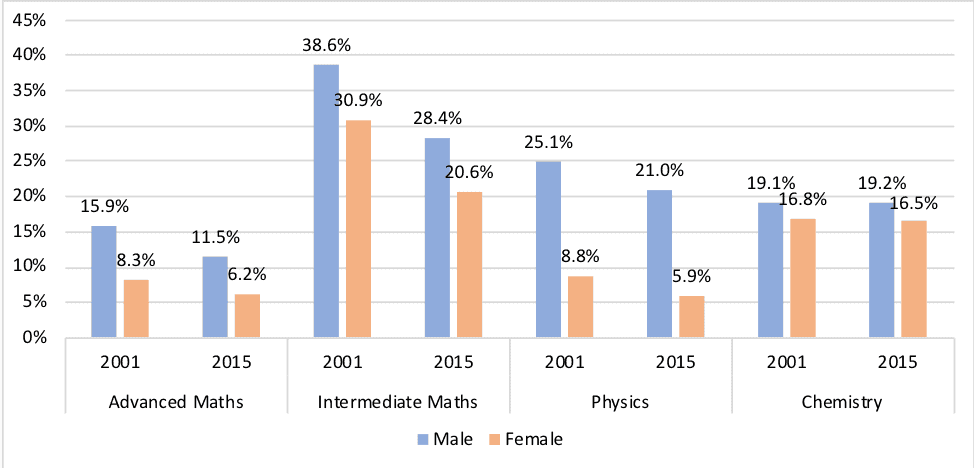
Trends in Year 12 STEM Course-Taking, by Course Subject and Gender, 2001-2015
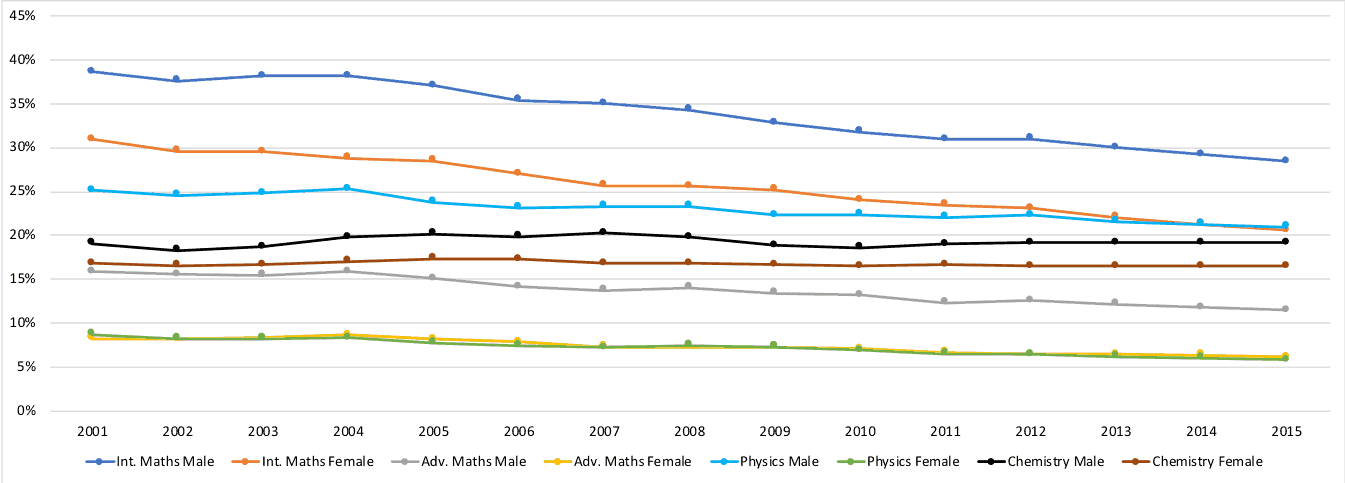
Source: Engineers Australia. (2017a). The state of the engineering practice.
In 2020, while 11.9% of boys were taking a higher mathematics course, only 6.7% of girls in year 12 were enrolled in the course. On the contrary, female participation is slightly higher in year 12 intermediate mathematics, where in 2020, 16.8% of girls are enrolled in the course while 18.4% of boys are enrolled in this course.
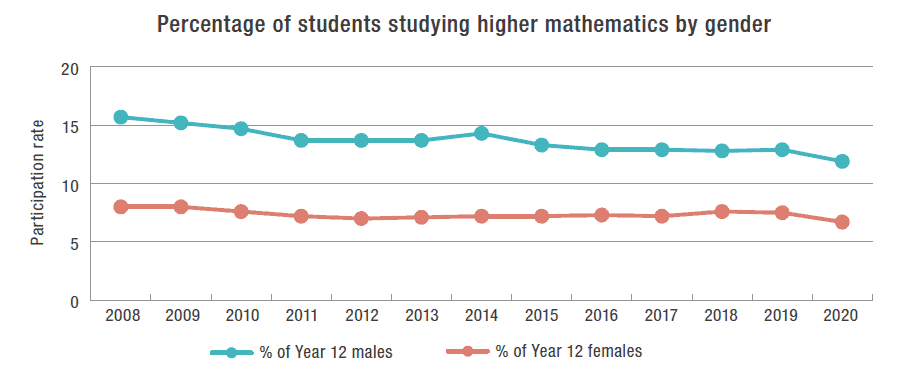
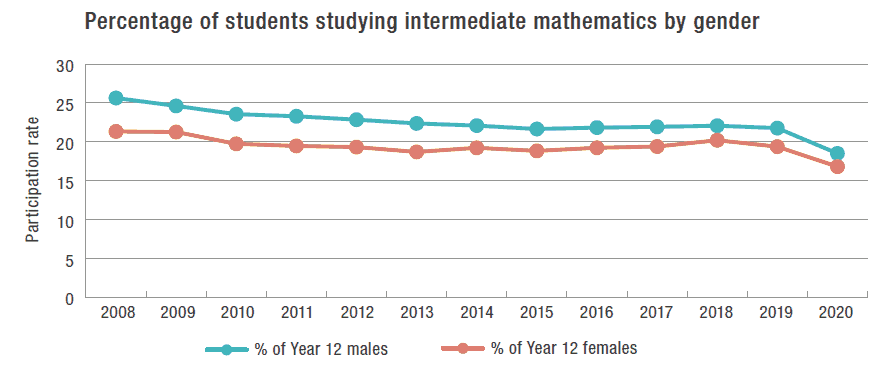
PISA 2018 Results and Science Career Expectations: In the most recent OECD’s Programme for International Student Assessment (PISA) assessment conducted in 2018, 15-year-old students from Australia participated. In both mathematics and science, Australian students’ average scores were higher than the average scores of students belonging to OECD countries. The average score of Australian boys was higher compared to the mean score of Australian girls for both the mathematics and science portions of the PISA.
Young adolescents from Australia were also surveyed about their science career expectations in the 2018 PISA survey. For both boys and girls, a higher percentage of Australian students compared to the percentage of students from OECD countries have expectations to work as science and engineering professionals. Specifically, 9.4% of Australian girls compared to the OECD average of 7.1% of girls expect to work as science and engineering professionals. Similarly, 18.1% of Australian boys compared to the OECD average of 15.2% of boys have these science and engineering career expectations.
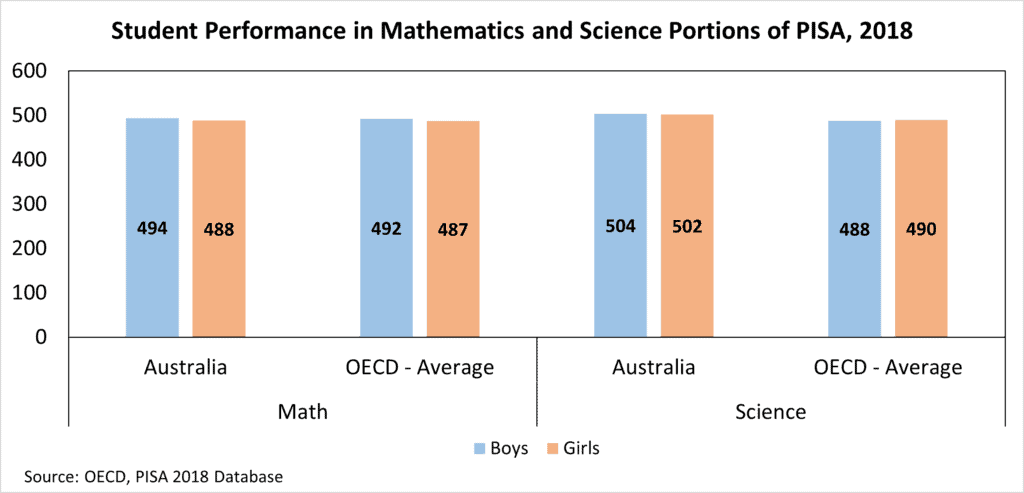
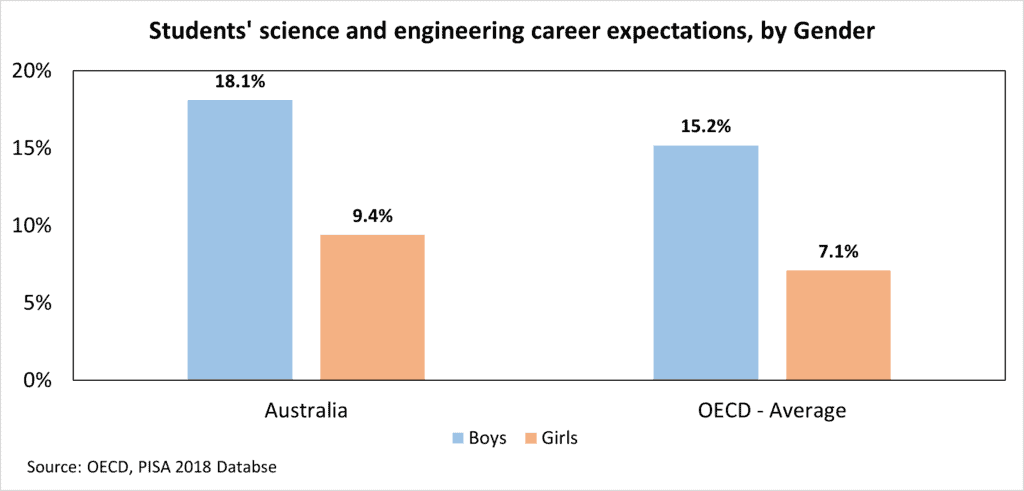
Additional Resources
- Engineers Australia. (2017). The state of the engineering practice.
- Australian Mathematical Sciences Institute (AMSI), Wienk, M., 2022, Year 12 Mathematics Participation Report Card: Enrolments Research All Time Low.
- OECD. (2018). Programme for International Student Assessment (PISA).